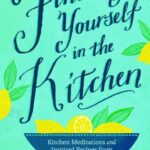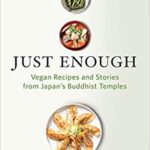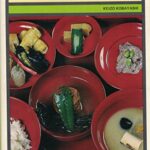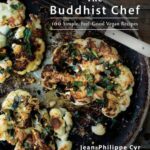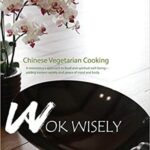The monks and nuns from Buddhist monasteries pray to Lord Buddha, and follow the path of abstinence, simplicity and sustenance – the guiding philosophy of the new wave of eaters
As the world is looking more and more towards plant based food, vegetarianism and veganism; the need to rediscover and reinvent recipes is getting to be as much more necessary. The balance of ingredients, retaining the nutritious elements in the dish and above all using local flavours and ingredients grown naturally, a sustainable method in addition to the food being familiar to the palate, are key to this quest. One of the ways to do this is look towards eastern cultures where vegetarianism is a big part of life. Many of these culinary traditions are about seasonal produce, and packing in nutrition and goodness based on ancient knowledge of health through food we eat.
One such very important culinary tradition is found in the Buddhist monasteries across the world. The monks and nuns from these monasteries pray to Lord Buddha, and follow the path of abstinence, simplicity and sustenance – the guiding philosophy of the new wave. And many Buddhist monks, especially those following the Mahayana and Theravada traditions, follow vegetarianism and even Veganism to a certain extent. Interestingly, the food traditions while being simple are distinct in their influences, and they use locally available ingredients, seasonal produce. Climate is another major factor influencing the food habits.
 Chef Pablo Narajo Agular was in India for a food show on NatGeo ‘Gourmet Goes Tribal’ in the year 2019. One can still watch it on the OTT platform Disney Hotstar, India. He goes on a trip to North East India discovering the tribes and their unique dishes. One of the episodes shows him visiting the largest living Buddhist monastery in the world – Tawang in Arunachal Pradesh. A region that has mixed food influences with Tibet on one side, Burma, and Myanmar on the other. Lamas from the monastery cooked for the Columbian-Brazilian chef. Thenthuk – pulled noodle soup / broth made using wheat dough, onions, tomatoes, ginger, garlic, mustard leaves seasoned with salt – an extremely simple yet robust preparation was served to him. Thenthuk and the Thukpa are widely popular in Tibet, Myanmar, Bhutan and parts of Ladakh as well. Pablo also gets to taste a unique tea made using Yak cheese and milk and a pinch of salt. The monks here are vegetarian and use local vegetables and ingredients in their food which is extremely simple in preparation, hot and ideally enriched to suit the climate and geography. One has seen recipes of Thunkpa in other parts of India that use spinach instead of mustard. It still is rich and flavourful. Other than the broth the lamas eat roti, rice, dal etc., which evidently come from the Indian influence.
Chef Pablo Narajo Agular was in India for a food show on NatGeo ‘Gourmet Goes Tribal’ in the year 2019. One can still watch it on the OTT platform Disney Hotstar, India. He goes on a trip to North East India discovering the tribes and their unique dishes. One of the episodes shows him visiting the largest living Buddhist monastery in the world – Tawang in Arunachal Pradesh. A region that has mixed food influences with Tibet on one side, Burma, and Myanmar on the other. Lamas from the monastery cooked for the Columbian-Brazilian chef. Thenthuk – pulled noodle soup / broth made using wheat dough, onions, tomatoes, ginger, garlic, mustard leaves seasoned with salt – an extremely simple yet robust preparation was served to him. Thenthuk and the Thukpa are widely popular in Tibet, Myanmar, Bhutan and parts of Ladakh as well. Pablo also gets to taste a unique tea made using Yak cheese and milk and a pinch of salt. The monks here are vegetarian and use local vegetables and ingredients in their food which is extremely simple in preparation, hot and ideally enriched to suit the climate and geography. One has seen recipes of Thunkpa in other parts of India that use spinach instead of mustard. It still is rich and flavourful. Other than the broth the lamas eat roti, rice, dal etc., which evidently come from the Indian influence.
 When speaking of Buddhist monastery kitchens and the dishes, one cannot help but mention nun Jeong Kwan from Chunjinam Hermitage, South Korea, who became the face of Buddhist Temple Cuisine. She was seen in the popular Netflix show ‘Chef’s Table’ and she also began to teach at the hermitage and the university in Seoul. She caught the attention of Master Chefs from across the world. In more recent times she was also featured in ‘Eat the World with Emeril Lagasse.
When speaking of Buddhist monastery kitchens and the dishes, one cannot help but mention nun Jeong Kwan from Chunjinam Hermitage, South Korea, who became the face of Buddhist Temple Cuisine. She was seen in the popular Netflix show ‘Chef’s Table’ and she also began to teach at the hermitage and the university in Seoul. She caught the attention of Master Chefs from across the world. In more recent times she was also featured in ‘Eat the World with Emeril Lagasse.
Kwan is a vegan. She uses locally popular and easily available ingredients, aged, and fermented to suit her recipes and most of the vegetables that grow locally in the hermitage. Mushrooms, preserved daikon, five-berry syrup, persimmon vinegar, shoyu, soybean paste, chilli paste…For her cooking food comes from understanding ‘what we take from nature’. It is way to communicate with oneself and others, she says.
Japanese Buddhist monks on the other hand commonly practice ‘Shojin Ryori’. The cooking philosophy is almost similar to Satwik food in India. Simplicity and harmony are two guiding factors of this cooking method, Each ‘Shojin Ryori’ meal is arrived at by balancing five colours and five different flavours. Meat and fish are definitely not used; in addition the recipes are strict devoid of pungent flavours like garlic and onion. Wastage too is consciously avoided in this cooking method. In turn fresh locally available vegetables, sea weed in addition to soy products are heavily utilised. They believe seasonal produce have more health benefits during the seasons they grow. Vegetable Tempura, Kenchin soup, Gomadofu with wasabi, pickled vegetables, Kabocha soup are some of the dishes the Buddhists of Japan cook. Shojin Ryori meal is available at the temples and some new age restaurants in Japan too are serving the food for its diners.
Trivia: As per Zen tradition, meals are served in three bowls. The largest is used to serve rice/ noodles/ congee based dish, the medium sized one is used to serve protein in the form of stew or soup, and the smallest one is for vegetable dish or salad.
Books:
Here are mentioned a few books one can follow for Buddhist recipes
The Buddhist Chef – 100 Feel Good Vegan Recipes
By Jean-Philippe Cyr
Finding Yourself in the Kitchen: Kitchen Meditations and Inspired Recipes from a Mindful Cook
By Dana Velden
Vegetable Kingdom
By Bryant Terry
Just Enough: Vegan Recipes and Stories from Japan’s Buddhist Temples
By Gesshin Claire Greenwood
In Buddha’s Kitchen: Cooking, Beieng Cooked and Other Adventures in a Meditation Center
By
By Kimberley Snow
Wok Wisely: Chinese Vegetarian Cooking – A Monastery’s approach to food and spiritual well-being
By
Dharma Realm Cookbook Team, Buddhist Text Translation Society, Bhikshuni Jin Rou
Wookwan's Korean Temple Food: The Road to the Taste of Enlightenment
By
Wookwan
Shojin Cooking: The Buddhist Vegetarian Cook Book
By
Keizo Kobayashi


